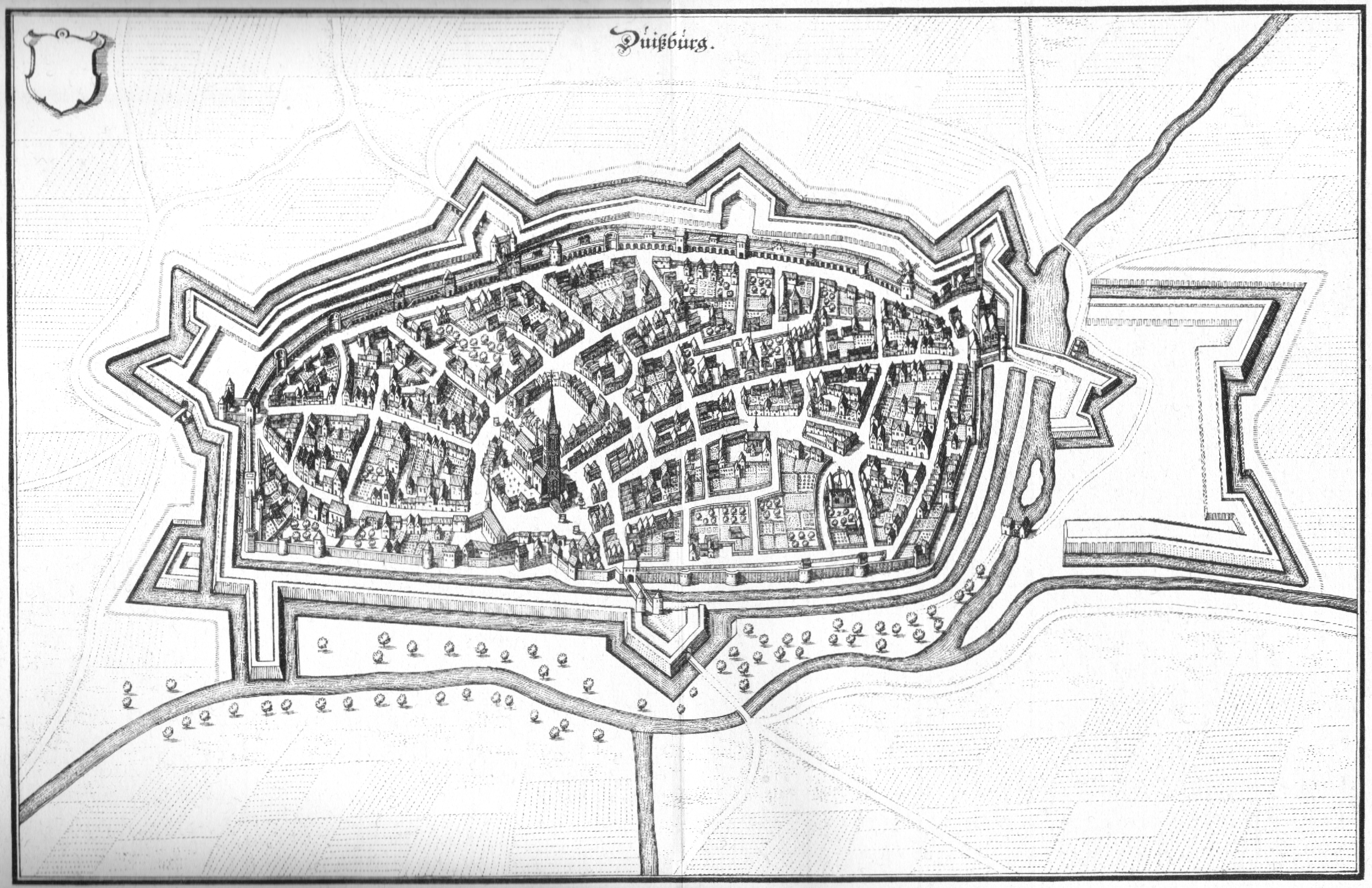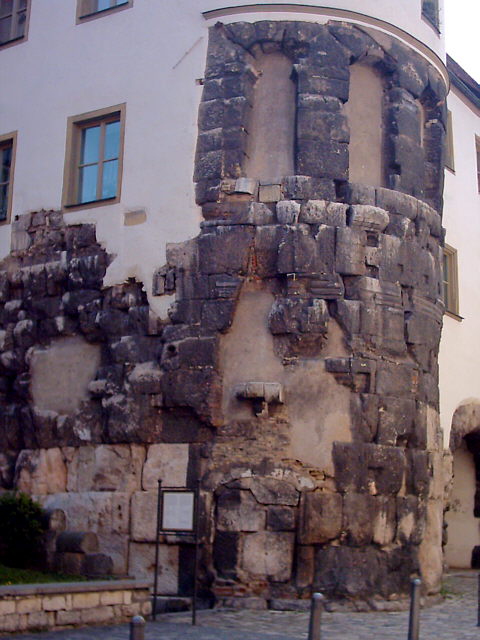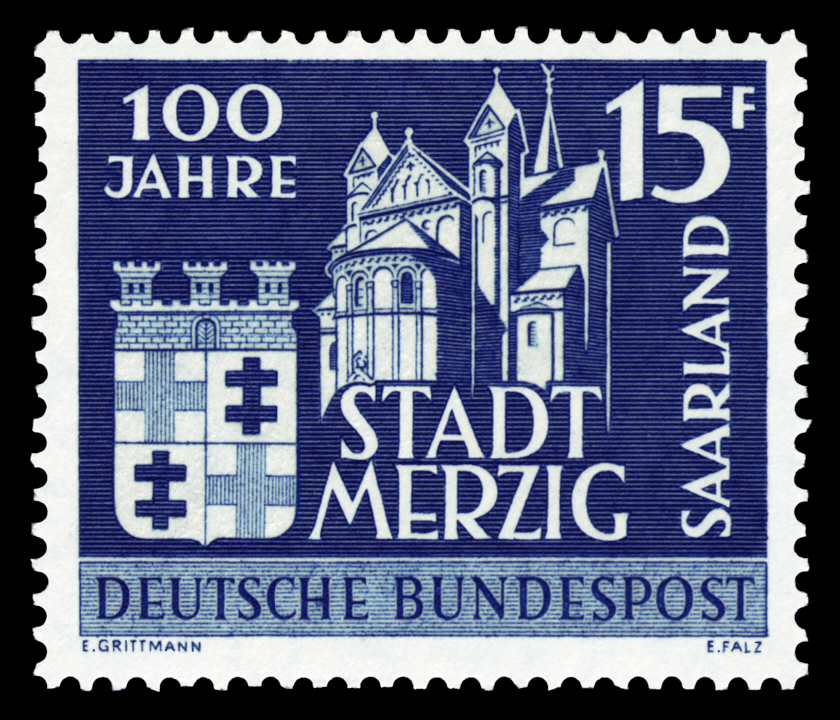|
Bertulf (archbishop Of Trier)
Bertulf (or Bartholf or Barthold) (died 883) was the Archbishop of Trier from 869 until his death. After the Archbishop of Trier Theotgaud was excommunicated by Pope Nicholas I in October 863 in Rome and deposed, and died in Rome in 868, Charles the Bald managed in 869 to have his candidate, Bertulf, appointed as Theotgaud's successor and confirmed by the Pope. Bertulf had previously been abbot of Mettlach. His election ended the long period of ''sede vacante''. Charles also awarded the new archbishop the crown estate of Merzig. The election of Bertulf was a provocation to Louis the German, who then set up his own candidate. This was Bertulf's brother Waldo, abbot of St. Maximin's Abbey in Trier. Eight years previously, he had been convicted of disloyalty at the Imperial Diet in Regensburg along with his brothers Udo and Berengar and their uncle Ernest, and like them, had been stripped of his offices and titles. His candidacy, however, foundered at the opposition of the other A ... [...More Info...] [...Related Items...] OR: [Wikipedia] [Google] [Baidu] |
Catholic Church
The Catholic Church (), also known as the Roman Catholic Church, is the List of Christian denominations by number of members, largest Christian church, with 1.27 to 1.41 billion baptized Catholics Catholic Church by country, worldwide as of 2025. It is among the world's oldest and largest international institutions and has played a prominent role in the history and development of Western civilization.Gerald O'Collins, O'Collins, p. v (preface). The church consists of 24 Catholic particular churches and liturgical rites#Churches, ''sui iuris'' (autonomous) churches, including the Latin Church and 23 Eastern Catholic Churches, which comprise almost 3,500 dioceses and Eparchy, eparchies List of Catholic dioceses (structured view), around the world, each overseen by one or more Bishops in the Catholic Church, bishops. The pope, who is the bishop of Rome, is the Papal supremacy, chief pastor of the church. The core beliefs of Catholicism are found in the Nicene Creed. The ... [...More Info...] [...Related Items...] OR: [Wikipedia] [Google] [Baidu] |
Liutbert, Archbishop Of Mainz
Liutbert (or Ludbert) (died 889) was the Archbishop of Mainz from 863 until his death. He also became Abbot of Ellwangen in 874 and is reckoned the first Archchancellor of Germany. He was one of the major organisers—along with Henry of Franconia—of the vigorous and successful defence of East Francia against Viking attack during his last decade. In May 868, Liutbert presided over the synod of Worms, which condemned the Greek church for heresy and laid down punishments for rebels. In 870, he became the archchaplain of Louis the German until 876 and thereafter of Louis the Younger until the latter's death in 882. Under Charles the Fat, however, he did not retain this position, rather it was preserved for Liutward of Vercelli. Liutbert did not accept his lack of position at court initially; he had himself referred to as "archchaplain," though he was not, in an 882 document of Weissenburg, another abbey of which he was abbot. The ''Annales Fuldenses'', from about the 860s, was ... [...More Info...] [...Related Items...] OR: [Wikipedia] [Google] [Baidu] |
883 Deaths
__NOTOC__ Year 883 (Roman numerals, DCCCLXXXIII) was a common year starting on Tuesday of the Julian calendar. Events By place Europe * Spring – Vikings, Viking raiders ravage Flanders, and sack the abbey at Saint-Quentin, Aisne, Saint-Quentin. King Carloman II blocks their passage at Grand-Laviers, Laviers, which had been on the banks of the Somme (river), Somme. Meanwhile, Vikings enter the Rhine, but are turned back by Henry of Franconia (possibly a margrave of Saxony). They over-winter at Duisburg. * King Charles the Fat travels to Nonantola (Northern Italy), where he meets Pope Marinus I. He receives complaints of Guy II of Spoleto, who is the official "protector" of Rome, and invades the Papal States. King Charles orders Guy to appear before a tribunal. * Guy II of Spoleto begins a revolt, and assembles an army supported with Arab auxiliaries. King Charles the Fat sends Berengar I of Italy, Berengar of Friuli with an expeditionary force to deprive him of Duch ... [...More Info...] [...Related Items...] OR: [Wikipedia] [Google] [Baidu] |
Ratbod, Archbishop Of Trier
Radbod (or Ratbod) (died 915) was the Archbishop of Trier from 883 until his death. Under the last Carolingians he obtained a great deal of benefits and converted the archdiocese of Trier into one of the most powerful institutions in Germany. In 898, Radbod received complete immunity from all taxes for the entire episcopal territory from Zwentibold. He obtained from Louis the Child the district and city of Trier, as well as the right to have a mint and impose customs duties. From Charles the Simple he gained the right of free election for his diocese of Trier. In this way the secular possessions of the bishops of Trier, which had sprung from the valuable donations of the Merovingian The Merovingian dynasty () was the ruling family of the Franks from around the middle of the 5th century until Pepin the Short in 751. They first appear as "Kings of the Franks" in the Roman army of northern Gaul. By 509 they had united all the ..., were raised to a secular principality. Sources ... [...More Info...] [...Related Items...] OR: [Wikipedia] [Google] [Baidu] |
Reuter, Timothy
Timothy Alan Reuter (25 January 1947 – 14 October 2002), grandson of the former mayor of Berlin Ernst Reuter, was a German-British historian who specialized in the study of medieval Germany, particularly the social, military and ecclesiastical institutions of the Ottonian and Salian periods (10th–12th centuries). Born in Manchester, Reuter attended a grammar school in Newcastle and studied at Cambridge University. Reuter then pursued his D.Phil. at Oxford University in medieval history under the supervision of Karl Leyser (d. 1992), another leading Anglophone scholar of German history. After a ten years lecturing at the University of Exeter, Reuter spent more than a decade as a ''Mitarbeiter'' (academic staff member) at the Monumenta Germaniae Historica in Munich, where he worked on editing the letters of the twelfth-century abbot Wibald of Corvey and (with Dr. Gabriel Silagi) produced the database for a concordance to the work of the medieval canonist Gratian. In 1994, ... [...More Info...] [...Related Items...] OR: [Wikipedia] [Google] [Baidu] |
Cologne Cathedral
Cologne Cathedral (, , officially , English: Cathedral Church of Saint Peter) is a cathedral in Cologne, North Rhine-Westphalia belonging to the Catholic Church. It is the seat of the Archbishop of Cologne and of the administration of the Archdiocese of Cologne. It is a renowned monument of German Catholicism and Gothic architecture and was declared a World Heritage Site in 1996. It is Germany's most visited landmark, attracting an average of 6 million people a year. At , the cathedral is the tallest twin-spired church in the world, the second tallest church in Europe after Ulm Minster, and the third tallest church of any kind in the world. Construction of Cologne Cathedral began in 1248 but was halted in the years around 1560, unfinished. Attempts to complete the construction began around 1814 but the project was not properly funded until the 1840s. The edifice was completed to its original medieval plan in 1880. The towers for its two huge spires give the cathedral the larg ... [...More Info...] [...Related Items...] OR: [Wikipedia] [Google] [Baidu] |
Willibert
Wilbert (died 889) was the archbishop of Cologne from 870 until his death. Wilbert was a priest in Cologne Cathedral when archbishop Gunther was excommunicated and deposed. Charles the Bald, king of West Francia, tried to install his own palatine cleric, Hilduin, as archbishop. He failed when Louis the German, king of East Francia, sent Liutbert, archbishop of Mainz, to consecrate the priest Wilbert instead. On 7 January 870, Wilbert was acclaimed by Liutbert with the consent of the clergy and people of the diocese, with Odilbald of Utrecht assisting the consecration. Pope Hadrian II sent an embassy under Wibod, bishop of Parma, carrying his letters of acceptance. His appointment was made rapidly in order to foil any attempt by Louis's rival, Charles the Bald, to fill the vacant see with a candidate favourable to him. Charles did succeed in placing Bertulf in power in the archdiocese of Trier. Wilbert received the contested pallium from Pope Hadrian in 875. He extended the cat ... [...More Info...] [...Related Items...] OR: [Wikipedia] [Google] [Baidu] |
Cologne
Cologne ( ; ; ) is the largest city of the States of Germany, German state of North Rhine-Westphalia and the List of cities in Germany by population, fourth-most populous city of Germany with nearly 1.1 million inhabitants in the city proper and over 3.1 million people in the Cologne Bonn Region, Cologne Bonn urban region. Cologne is also part of the Rhine-Ruhr metropolitan region, the List of EU metropolitan regions by GDP#2021 ranking of top four German metropolitan regions, second biggest metropolitan region by GDP in the European Union. Centered on the left bank of the Rhine, left (west) bank of the Rhine, Cologne is located on the River Rhine (Lower Rhine), about southeast of the North Rhine-Westphalia state capital Düsseldorf and northwest of Bonn, the former capital of West Germany. The city's medieval Cologne Cathedral () was the History of the world's tallest buildings#Churches and cathedrals: Tallest buildings between the 13th and 20th century, world's talles ... [...More Info...] [...Related Items...] OR: [Wikipedia] [Google] [Baidu] |
Electorate Of Trier
The Electorate of Trier ( or '; ) was an Hochstift, ecclesiastical principality of the Holy Roman Empire that existed from the end of the 9th to the early 19th century. It was the temporal possession of the prince-archbishop of Trier (') who was, ''ex officio'', a prince-elector of the empire. The other ecclesiastical electors were the archbishops (in the secular context called simply electors) of Electorate of Cologne, Cologne and Electorate of Mainz, Mainz. The capital of the electorate was Trier; from the 16th century onward, the main residence of the Elector was in Koblenz. The electorate was secularized in 1803 in the course of the German mediatisation. The Elector of Trier, in his capacity as archbishop, also administered the Roman Catholic Diocese of Trier, Archdiocese of Trier, whose territory did not correspond to the electorate (see map below). History Middle ages Trier, as the important Roman provincial capital of ', had been the seat of a bishop since Roman tim ... [...More Info...] [...Related Items...] OR: [Wikipedia] [Google] [Baidu] |
Regensburg
Regensburg (historically known in English as Ratisbon) is a city in eastern Bavaria, at the confluence of the rivers Danube, Naab and Regen (river), Regen, Danube's northernmost point. It is the capital of the Upper Palatinate subregion of the state. With more than 150,000 inhabitants, Regensburg is the List of cities in Bavaria by population, fourth-largest city in the State of Bavaria after Munich, Nuremberg and Augsburg and the eighth-largest of all List of cities and towns on the river Danube, cities on the river Danube. From its foundation as an imperial Roman river fort, the city has been the political, economic and cultural centre of the surrounding region. Later, under the rule of the Holy Roman Empire, it housed the Perpetual Diet of Regensburg. The medieval centre of the city was made a UNESCO World Heritage Site in 2006 because of its well-preserved architecture, being the biggest medieval city site north of the Alps, and the city's historical importance for assembli ... [...More Info...] [...Related Items...] OR: [Wikipedia] [Google] [Baidu] |
Merzig
Merzig (, , Moselle Franconian language, ''Moselle Franconian:'' ''Meerzisch''/''Miërzësch'') is a town in Saarland, Germany. It is the capital of the district Merzig-Wadern, with about 30,000 inhabitants in 17 municipalities on 108 km². It is situated on the river Saar (river), Saar, approx. 35 km south of Trier, and 35 km northwest of Saarbrücken. History Evolution of the name In addition to the above, the city was known under French rule as ''Mercy''. Subdivisions Merzig was created in 1974 as part of the territorial reform in Saarland. The present-day town consists of the previous town of Merzig and 16 surrounding former municipalities. The population of the present town, including all outlying districts (as of June 30, 2011): Culture and sights Museums * Expeditionary Museum Werner Freund * Fine mechanical museum in the Fellenbergmühle * Museum of Local History in Fellenberg Castle * B-Werk Besseringen * Saarland Psychiatric Museum Buildings * ... [...More Info...] [...Related Items...] OR: [Wikipedia] [Google] [Baidu] |




